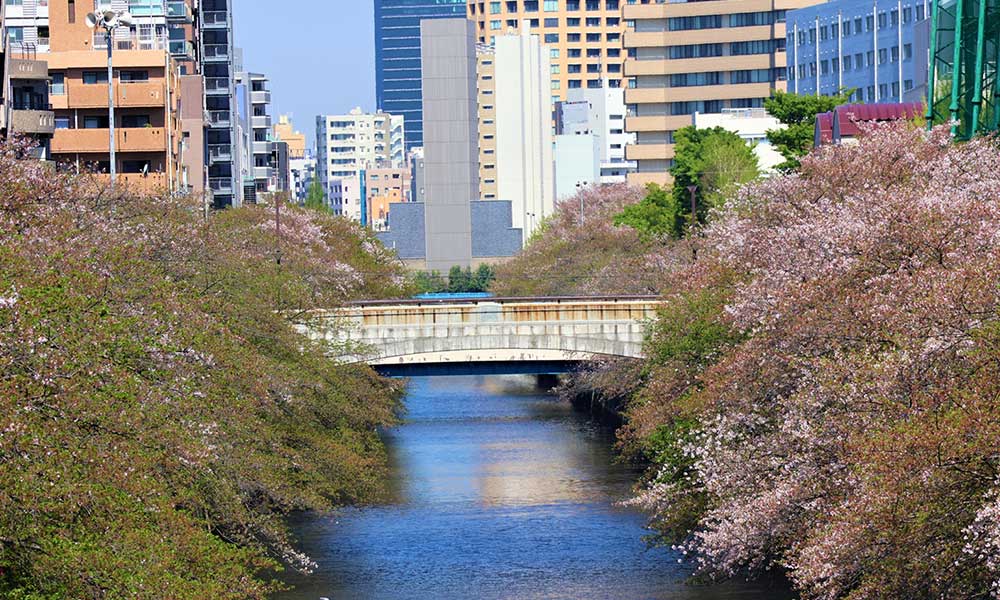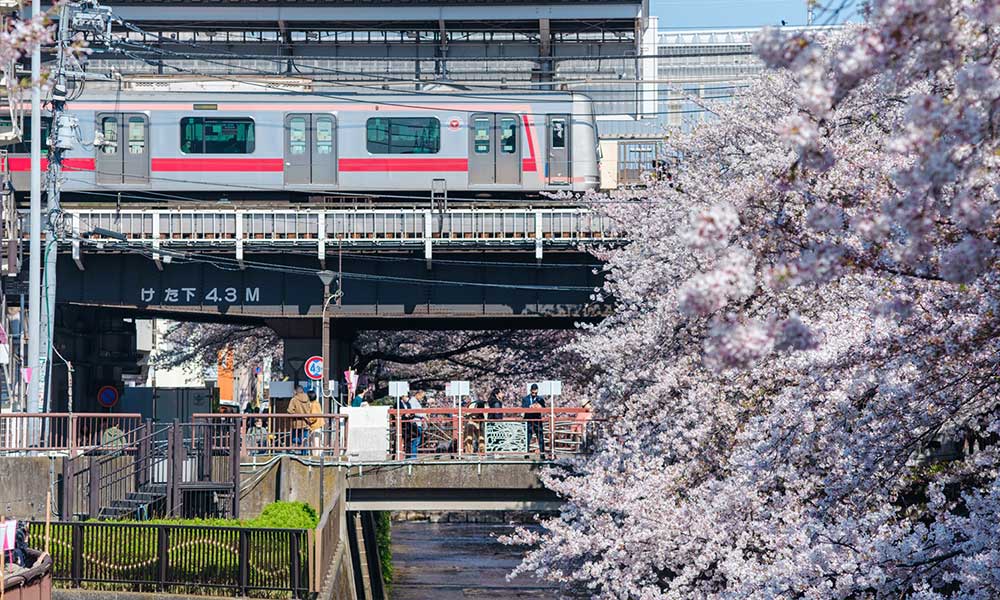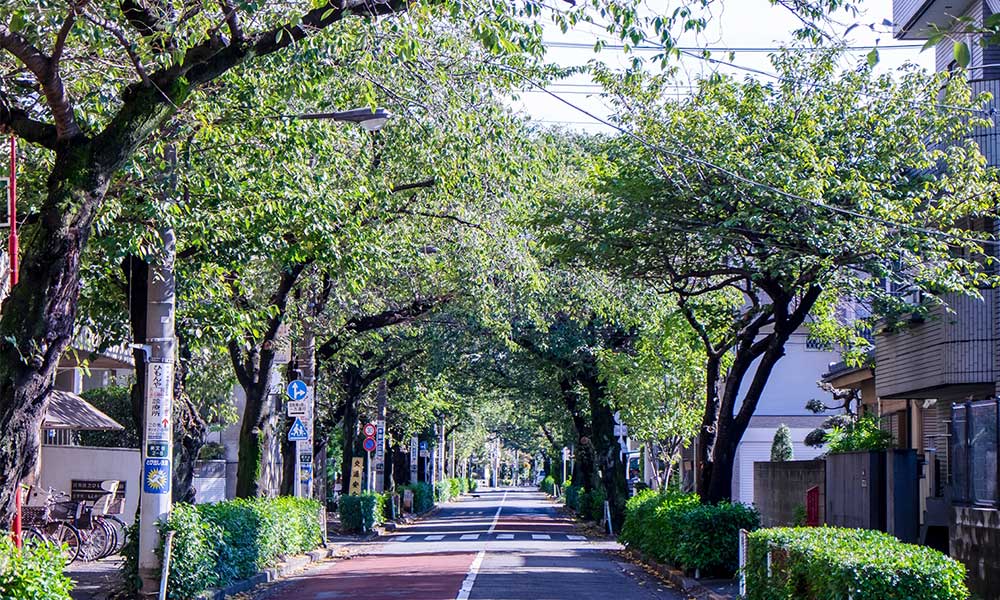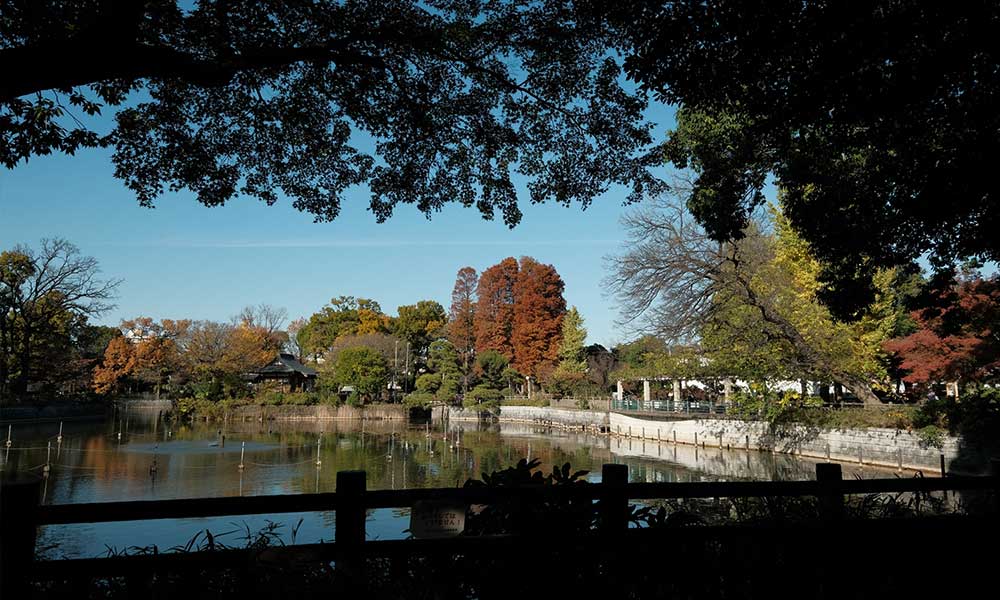Meguro Ward, Tokyo東京都目黒区
Living in Meguro Ward, Tokyo

We have Summarized the livability of Meguro Ward, Tokyo.
23 WARD AREA23区地域
-
- CHIYODA WARD 千代田区
-
- CHUOU WARD 中央区
-
- MINATO WARD 港区
-
- SHINJYUKU WARD 新宿区
-
- BUNKYO WARD 文京区
-
- TAITO WARD 台東区
-
- SUMIDA WARD 墨田区
-
- KOTO WARD 江東区
-
- SHINAGAWA WARD 品川区
-
- MEGURO WARD 目黒区
-
- OTA WARD 大田区
-
- SETAGAYA WARD 世田谷区
-
- SHIBUYA WARD 渋谷区
-
- NAKANO WARD 中野区
-
- SUGINAMI WARD 杉並区
-
- TOSHIMA WARD 豊島区
-
- KITA WARD 北区
-
- ARAKAWA WARD 荒川区
-
- ITABASHI WARD 板橋区
-
- NERIMA WARD 練馬区
-
- ADACHI WARD 足立区
-
- KATSUSHIKA WARD 葛飾区
-
- EDOGAWA WARD 江戸川区
CONTENTS
- What kind of place is Meguro Ward, Tokyo?
- Meguro WardPR video
- How is the traffic situation in Meguro Ward?
- How are the rent and land prices in Meguro Ward?
- How is childcare and education in Meguro Ward?
- How about shopping in Meguro Ward?
- How about jobs and recruitment in Meguro Ward?
- Meguro Ward’s unique subsidy/subsidy system
What kind of place is Meguro Ward, Tokyo?

Meguro Ward is a popular place to move to and is ranked among the most desirable places to live.
Meguro Ward is located in the southwest of the 23 wards and covers an area of approximately 14.67 square kilometers.
It borders Shibuya Ward to the north, Shinagawa Ward to the east, Ota Ward to the south, and Setagaya Ward to the west.
The valleys of the Meguro River and the Nonagawa River run from northwest to southeast, and the area is characterized by an undulating topography formed by valleys and plateaus, with many slopes.
The population is approximately 278,000, and the number of households is approximately 158,000. (As of February 2023)
Meguro-cho and Tonofusa-cho in Ebara-gun were merged and incorporated into Tokyo City, and Meguro Ward was created in 1932.
Since the Edo period, the area has been a thriving agricultural region, where many vegetables and other agricultural products were grown.
After that, until the early Showa period, it was a peaceful area with fields remaining, but after the Great Kanto Earthquake, infrastructure was gradually developed, such as the opening of the Toyoko Line, and at the same time, residential areas and factories began to spread, and the area became almost devoid of primary industries.
The central station in the ward is Meguro Station. The station itself is located in Shinagawa Ward, but the surrounding area is in Meguro Ward, and is a bustling area with several office buildings and large commercial facilities.
In addition, Nakameguro and Jiyugaoka, which are regulars on the rankings of places to live and have many stylish restaurants and shops, are also located in this area.
There are many tourist spots in Meguro.
The Tokyo Metropolitan Museum of Photography, a public art museum established as a cultural facility for photography and video, is famous, and it also has exhibition facilities, a library, shops and cafes.
The Meguro River in the ward is famous as one of the best cherry blossom viewing spots in the country, and the cherry blossom line that stretches for about 4 km from Ohashi Bridge to Shimomeguro is a popular spot that attracts many visitors every year.
The “Hundred Steps Staircase” inside Hotel Gajoen Tokyo is the only wooden building in the park, made of zelkova planks, and together with the four banquet halls built along the stairs, it was designated a tangible cultural property of Tokyo in 2009.
Meguro is also famous for having many embassies, with 12 embassies located in the ward, including those of Nepal and Thailand, giving it an international side.
The most representative festival is the “Meguro Ward Citizens’ Festival” held every autumn. It is a historic festival that began in 1977, and is especially famous for its main event, the Meguro Sanma Festival, where you can eat fresh sanma sent from Kesennuma City, Miyagi Prefecture, a sister city of the city. It is also a lively festival that attracts many visitors every year, with events such as a rakugo performer performing the rakugo story “Meguro no Sanma,” which is the origin of the festival.
PR video of Meguro Ward, Tokyo
Meguro Ward’s 90-year history
How is the traffic situation in Meguro Ward?

Meguro Ward is not served by JR lines, but has easy access to Kanagawa.
There are five lines and eight stations that pass through Meguro Ward.
| Jiyugaoka Station | Tokyu Toyoko Line・Tokyu Oimachi Line |
| Nakameguro Station | Tokyo Metro Hibiya Line・Tokyu Toyoko Line |
| Gakugeidaigaku Station | Tokyu Toyoko Line |
| Toritsu Daigaku Station | Tokyu Toyoko Line |
| Yutenji Station | Tokyu Toyoko Line |
| Komaba-Toudaimae Station | Keio Inokashira Line |
| Midorigaoka Station | Tokyu Oimachi Line |
| Senzoku Station | Tokyu Meguro Line |
Tokyu Bus and Odakyu Bus operate local bus routes.
The expressway accessible from the ward is the Metropolitan Expressway Central Circular Route, with the Gotanda IC as an entrance/exit.
The national highway that runs through the ward is Route 246, which runs from Chiyoda Ward through Kanagawa Prefecture to Numazu City, Shizuoka Prefecture.
Meguro Station has many train and bus services, making it an extremely convenient station for traveling in any direction.
There are many narrow roads and few parking spaces.
How are the rent and land prices in Meguro Ward?

Meguro Ward: Affordable and easy-to-live-in area popular with students
According to information from a real estate information website, the average rent in the ward for a newly built apartment within a 10-minute walk from the station is about 120,000 yen for a 1K apartment and 174,000 yen for a 2DK apartment.
The average land price per tsubo is about 4,030,000 yen per tsubo.
The average price of a newly built apartment is 85,950,000 yen, the average area is 59.44 ㎡, and the average price per tsubo is 4,781,000 yen per tsubo. (As of 2018-2022)
How is childcare and education in Meguro Ward?

Meguro Ward: A city that actively supports the child-rearing generation
Meguro ward has 48 nursery schools, 22 kindergartens, 24 elementary schools, 16 junior high schools, 11 high schools, 7 junior colleges/universities, and 5 vocational schools.
Child medical expenses subsidies are available for children under 18 years old (until March 31st after they reach 18 years old) for both outpatient and inpatient care, and are fully subsidized.)
Child allowances are provided: 15,000 yen for children under 3 years old, 10,000 yen for the first and second children from 3 years old to preschool age, 15,000 yen for the third child and onwards, and 10,000 yen for junior high school students.
Meguro Ward also has a wide range of unique support.
The “First Birthday Support Project”, which started in 2022, provides information on childcare support, grasps the situation of families, and provides consultation support for those raising children who are about to turn one year old.
You can also apply for a childcare package that gives you a “catalog gift” from which you can choose childcare products that will be useful for childcare. The catalog gift is a very advantageous system, with one gift (worth 10,000 yen) for the first child, two gifts (worth 20,000 yen) for the second child, and three gifts (worth 30,000 yen) for the third child and beyond.
The “After-school Care Clubs”, which are located in several places in Meguro Ward, are facilities that can take care of children from the first to sixth grades of elementary school when their parents are left alone after school due to work or other reasons, and are a very welcome system for dual-income households.
One unusual support is the “Parent-Child Bathing Day”.
This system allows parents and children up to elementary school age who live in the ward to bathe for free at any public bath in the ward once a month.
There are also many cram schools, extracurricular facilities, and parks, making it a great environment for education-oriented families to gather.
Many families have their students take the entrance exams from junior high school, and because the level is high, education costs are high.
How about shopping in Meguro Ward?

Meguro Ward is an easy place to live, with not only stylish shops but also many convenient supermarkets.
While Meguro Ward has many fashionable shops and restaurants, there are also many areas with old-fashioned shopping streets, so you can enjoy different things depending on the area.
Nakameguro Gate Town, located right next to Nakameguro Station, is a complex that includes offices and residences, as well as restaurants, shopping facilities, and libraries. The plaza inside the facility also holds seasonal events, making it a popular spot with many customers.
Nakameguro Overpass, which opened in 2016, opened in an area of about 700m under the elevated railway around Nakameguro Station, and has been a popular spot since its opening, with 28 stores lined up, including fashionable restaurants and miscellaneous goods.
Meguro Ginza Shopping Street is located a 2-minute walk from Nakameguro Station. There are few private shops that would be called a shopping street, and it is a rare shopping street lined with fashionable restaurants, making it a popular spot with local customers and tourists.
There are about 50 supermarkets, large and small, with 28 My Basket stores being the largest of them all.
Although they are small, they are reasonably priced and stock everything you need, and many of them are open from early morning until late at night, making them a popular supermarket.
Jiyugaoka and Nakameguro are popular areas in Tokyo, with many stylish goods stores and cafes, making them great places to shop.
This is an area with high prices, with many high-priced stores such as supermarkets and restaurants.
How about jobs and recruitment in Meguro Ward?
Meguro Ward is a city packed with shops, restaurants and other community-based facilities.
The average annual income in Meguro Ward is 6.38 million yen.
The main industry in Meguro Ward is the tertiary industry. There are many bustling areas with downtown areas, and the area is full of job openings in retail and service industries such as commercial facilities and restaurants.
























